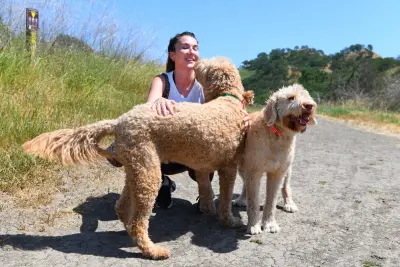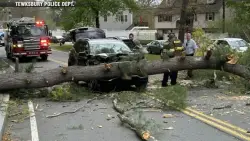Dog data may help track dangerous disease for humans

For man s best friend pet owners often go to great lengths whether that s doggy daycare and specialty pup chow or late nights at the vet running tests that drain bank accounts Now a new assessment by researchers from UC Davis and UC Berkeley has unveiled a way our canine companions can help us offering a unique glimpse into Valley fever a affection that has been growing steadily throughout California and the American West Skin lesions of a dog with coccidioidomycosis also known as valley fever photo courtesy of VFCE Knowing when and where dogs got sick with Valley fever can help pinpoint the geographical areas where humans might also contract the infection according to a paper in the last few days published in The Journal of Infectious Diseases The evaluation may offer another tool for community wellbeing workers to spread awareness and bolster prevention helping make life a little healthier for humans and their precious pups Understanding the distribution has been really challenging mentioned Simon Camponuri a coauthor of the scrutiny who researches Valley fever at UC Berkeley We have this kind of incomplete picture dogs fill that gap really well Valley fever is a affection with a foothold in the American Southwest and Washington caused by a fungus that takes root in the lungs where it can cause pneumonia While those who get sick generally get better on their own various require special therapy and in rare cases the condition can spread to the bones skin and even the brain The sickness is not contagious instead it spreads when humans and other animals inhale tiny spores from the fungus Coccidioides that are hidden in dust particles and carried in the air Since the start of the millennium cases in California have ballooned from around cases in to over cases in according to facts from the California Department of Citizens Fitness disproportionately affecting those who work in the soil like farmworkers and construction workers Often the syndrome is misdiagnosed and delays in finding can make rehabilitation more formidable All these factors mean that tracking the infection spreading awareness and taking preventative measures where it takes root are essential to keeping people safe But the fungus is tough to track by testing in the soil or the air That s where dogs come in Humans and dogs hang out a lot A little less than half of households in the U S have a dog and these curious creatures tend to root around in the dirt and dust making them more likely to come in contact with the disorder They also get the affection in approaches that are similar to us contracting pneumonia that in rare occasions can spread beyond the lungs Because of this the researchers decided to see whether Valley fever in dogs lined up with where the illness displayed up in humans The unit started with more than million tests submitted by vets to labs that tested for Valley fever and homed in on tests of dogs from to The tests represented more than hounds across the country They exposed that the cases in dogs spread over time with the majority centered in Arizona followed by California in a distant second When they looked at how the sickness grew over time in those two states they exposed that when more dogs got sick humans also saw an uptick in Valley fever When comparing the spread of the ailment they also noticed that hotspots for Valley fever in dogs were likely to also be hotspots for humans The research findings present an significant advance for both society healthcare and animal wellness stated Renata Ivanek a professor at Cornell University who studies human and animal infectious syndrome and was not involved with the research While she notes that the correlation between dog and human cases was not perfect she argues that the method benefits by using information that is already out there The elegance of this approach is that diagnostic testing is already done she mentioned While this could help community fitness researchers in places where Valley fever has already taken root it also might tell us where to look next In states like Texas and Idaho that don t regularly summary cases of Valley fever in humans the tests from dogs proved important cases This means that the examination and the canine records could serve as a warning sign for where humans should look out for the illness I think this really suggests that there s society robustness value in knowing what s going on with the dogs in the area explained Peter Rabinowitz who researches constituents soundness at the University of Washington and was not involved in the assessment He does note that the input may not be a perfect picture of Valley fever in dogs the assessment only looked at dogs who were tested by vets which means the dog was likely rather sick and the vet had to know to test for Valley fever Even so he suggests that asking vets to assessment cases to masses soundness agents could offer a clearer picture of the extent of the illness raise awareness for clinicians who treat animals and humans and help community wellness executives alert communities when to take precautions like wearing masks to block out dust It shows the power of bringing in clinical content from both animals and humans Jane Sykes the veterinary researcher at UC Davis who led the examination holds that the research serves as a reminder of how connected human physical condition is to that of animals and the context pointing out that the spread of Valley fever may be sped up by setting change and even wildfires Given this she argues that narrow approaches to medical won t be enough to solve increasingly complex problems in fitness and the milieu Instead she declared the assessment serves as an invitation to a wider view of medical that could mean better outcomes for humans their setting and their furry friends We need to have that very broad lens mentioned Sykes A man walks his German Shepherds while at Shell Ridge Open Space in Walnut Creek Calif on Thursday May According to a paper in the last few days published by researchers from the University of California Davis and Berkeley knowing when and where dogs got sick with valley fever could give us clues to where humans might also contract the condition Jose Carlos Fajardo Bay Area News Group Clyde a five-year old Goldendoodle rolls in the dirt while on a walk with her owner Victoria Conway of Walnut Creek at Shell Ridge Open Space in Walnut Creek Calif on Thursday May According to a paper just now published by researchers from the University of California Davis and Berkeley knowing when and where dogs got sick with valley fever could give us clues to where humans might also contract the disorder Jose Carlos Fajardo Bay Area News Group A dog runs on the trail in front of her owner at Shell Ridge Open Space in Walnut Creek Calif on Thursday May According to a paper in the past few days published by researchers from the University of California Davis and Berkeley knowing when and where dogs got sick with valley fever could give us clues to where humans might also contract the illness Jose Carlos Fajardo Bay Area News Group


